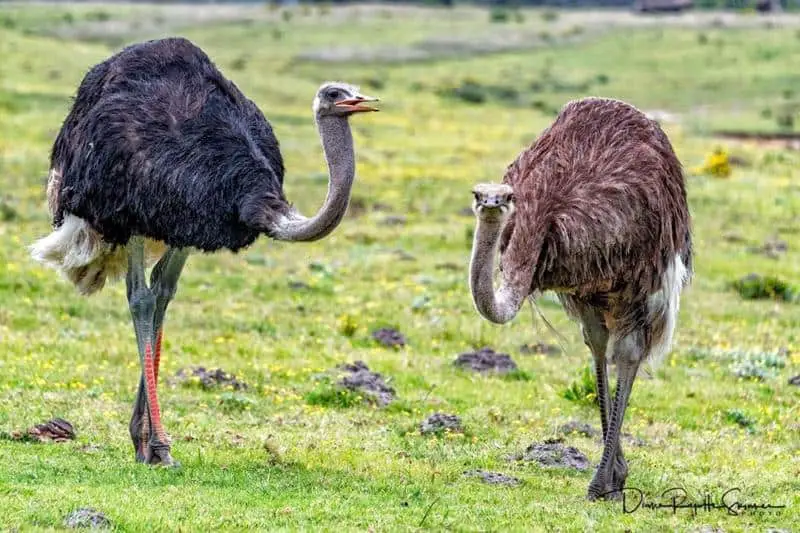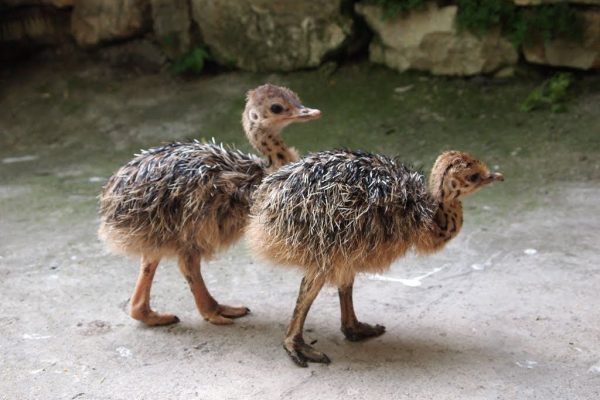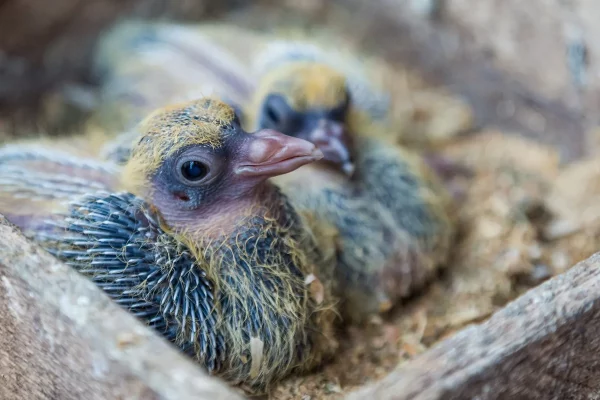Step into the world of birds that have an interesting taste in food – dead animals! Even though it might seem strange to us, some birds play an important role in cleaning up the remains of animals that have passed away.
In this blog post, we’re diving into the world of these special birds. They help keep things in balance by eating what others might find unappetizing. While you might have heard of vultures doing this, there are other birds that join in too.
We’ll take a closer look at common birds that are known for dining on dead animals. Keep in mind that this list isn’t complete, but it will give you a good idea of the birds that are experts at this unique kind of meal
List of Birds that eat Dead Animals (Scavenger Birds)
Black Vulture

- Scientific name: Coragyps atratus
- Lifespan: Around 20-25 years
- Size: Medium to large; approximately 25-27 inches (63-68 cm) in length, wingspan of 60-70 inches (152-178 cm)
- Origin: Native to the Americas, including North and South America.
The Black Vulture is a large raptor with black plumage and silvery patches on its wingtips. It is found in the Southeast United States, Central America, and South America. Black Vultures primarily live in forested and open areas, breeding in woodlands and foraging in open habitats and along roads. They feed on roadkill and occasionally in dumpsters, consuming fresh carcasses of large mammals and decaying meat.
Egyptian Vulture

- Scientific name: Neophron percnopterus
- Lifespan: About 25-30 years
- Size: Medium-sized vulture; roughly 26-30 inches (66-76 cm) in length, wingspan of 66-71 inches (168-180 cm)
- Origin: Found in southern Europe, Africa, and Asia.
The Egyptian Vulture is a medium-sized vulture with a bare, yellow face and a narrow bill with a black tip. It has black flight feathers with contrasting inner white feathers, visible during flight. This vulture is found in the Middle East, Southern Europe, and occasionally throughout Africa. Egyptian Vultures scavenge on rubbish dumps and carcasses, using tools like rocks or twigs to reach their meals. They are opportunistic feeders, eating small birds, mammals, or reptiles.
Hooded Vulture

- Scientific name: Necrosyrtes monachus
- Lifespan: Typically 20-25 years
- Size: Small to medium; around 24-28 inches (61-71 cm) in length, wingspan of 60-70 inches (152-178 cm)
- Origin: Native to sub-Saharan Africa.
The Hooded Vulture is a small vulture covered in brown plumage, with a small pink head featuring white, fluffy feathers. It has a narrow, curved beak, blue eye-rings, and silvery flight feathers seen in flight. Hooded Vultures inhabit Central Africa, preferring open country, forest edges, and towns. Their diet includes mussels, lobsters, mollusks, dead fish, grasshoppers, grubs, and locusts.
Griffon Vulture

- Scientific name: Gyps fulvus
- Lifespan: About 25-30 years
- Size: Large vulture; approximately 38-43 inches (96-109 cm) in length, wingspan of 94-110 inches (239-279 cm)
- Origin: Found in parts of Europe, Asia, and Africa.
The Griffon Vulture, also known as Eurasian Griffon with the scientific name Gyps fulvus, is an Old World vulture with a white head, broad wings, and short tail feathers. Its neck ruff is also white, and its bill is bright yellow. Griffon Vultures are found in Midwestern and Eastern North America and Central America, preferring mountainous terrain, plateaus, shrubland, grassland, and semi-desert areas. They feed on carrion from medium to large mammals and occasionally on injured or weak cattle and sheep.
Turkey vulture

Image Source
- Scientific name: Cathartes aura
- Lifespan: Up to 20 years
- Size: Approximately 64-81 centimeters (25-32 inches)
- Origin: North and South America (found in regions such as the United States, Mexico, and Brazil)
Large raptors found in North and South America include turkey vultures and turkey buzzards. It belongs to the Cathartidae family, which also contains the bigger yellow-headed vulture and the black vulture. One of the most prevalent vultures in North America is this big red-headed black bird.
The turkey vulture has exposed red skin on its head, giving it a reddish look, unlike other birds on this list that have red spots on their heads. The rest of its body is black in color. It can rip flesh with its long, hooked beak. The wingspan of a turkey vulture may measure up to 6 feet.
The food source for turkey vultures is dead animals. They often fly above in search of food. They can devour up to 2 pounds of rotting meat each day and are quite effective at doing so.
How to scare off turkey vultures? Using non-lethal techniques is the best way to frighten them away from your garden feeders. Use a yard hose to spray them or install an ultrasonic repellant.
Andean Condor

- Scientific name: Vultur gryphus
- Lifespan: Typically 50-70 years
- Size: One of the largest flying birds; around 45-50 inches (115-130 cm) in length, wingspan of 9-10 feet (274-305 cm)
- Origin: Native to South America, specifically the Andes mountains.
The Andean Condor is a very large vulture with long “fingers” at the wingtip, a white collar, and big white panels on the upper wing visible when the birds bank. It is found in the Andes, Southern Chile, Tierra del Fuego, and Argentina. The Andean Condor prefers open grasslands and alpine areas but may occasionally visit lowlands and desert areas. It feeds on carrion, mammals, reptiles, other birds, fish, amphibians, and invertebrates, often in a group. The condor’s powerful sense of smell allows it to locate freshly dead animals.
California Condor

- Scientific name: Gymnogyps californianus
- Lifespan: Around 40-60 years
- Size: One of the largest flying birds in North America; roughly 43-55 inches (109-140 cm) in length, wingspan of about 9.5 feet (290 cm)
- Origin: Endemic to western North America.
The California Condor is mainly black with a white stripe on the underwing, wingtips that splay to resemble fingertips, and an orange head. This critically endangered species is limited to coastal hills and mountains around California and the Grand Canyon. The California Condor prefers to feed on medium to large-sized mammal carcasses but will also scavenge on small mammals if available. It seeks freshly dead animals with soft tissue to feed on.
Crested Caracara

Image Source
- Scientific name: Caracara plancus
- Lifespan: over 30 years
- Size: 26 inches
- Native to: Tierra del Fuego in southernmost South America to the southern United States, Mexico, and Central America
The Crested Caracara is a large and long-legged falcon with a dark cap, pale neck, dark body, and a face that can vary in color from orange-red to pale pink. The wings and tail have white undersides visible during flight. It is found in the Southern United States and South America and prefers open fields, deserts, and beaches. The Crested Caracara mainly feeds on lizards and snakes but is an opportunistic raptor that also scavenges on carrion and can steal from other raptors.
Bald eagles

- Scientific name: Haliaeetus leucocephalus
- Lifespan: 20 – 30 years
- Size: 28 to 38 inches in height
- Native to: North America
The Bald Eagle is a large and majestic-looking eagle with a blackish to brown body, white head, and tail. Immatures have dark brown plumage with large patches of white. Bald Eagles prefer habitats near lakes and reservoirs with plenty of fish and surrounding forests. They are well-known scavengers, eating live fish caught from the water and dead fish caught by other animals, as well as carrion. Bald Eagles are found throughout North America.
African Fish Eagle (brown bird with white head)

Image Source
- Scientific name:Haliaeetus vocifer
- Lifespan: about 12 to 24 years
- Size: 25-inch
- Native to: sub-Saharan Africa
African Fish Eagle is a large eagle with chestnut and white plumage, white windows in the wings (in juveniles), and a pale dark-tipped tail (also in juveniles). It is found in Central and Southern Africa, particularly in areas near freshwater lakes, reservoirs, rivers, and the mouths of rivers and lagoons. Similar to the bald eagle, the African Fish Eagle prefers fish as one of its main food sources but will also consume other birds, reptiles, and carrion. It is known to scavenge and will steal food from other birds.
Carrion Crow

- Scientific name: Corvus corone
- Lifespan: Typically 4-6 years
- Size: Medium-sized crow; approximately 17-20 inches (43-51 cm) in length, wingspan of 33-39 inches (84-100 cm)
- Origin: Found in various parts of Europe and Asia.
Carrion Crow is a large crow with black plumage, a short, rounded beak, and a somewhat short tail compared to the common raven. It is found in West Europe and Asia, in open and semi-open habitats such as towns, farmland, open woodland, and moorland. Carrion crows scavenge for food and will feed on carrion of all kinds, regardless of its age or origin. They also consume insects, worms, and occasional seeds and fruit.
Great Skua

- Scientific name: Stercorarius skua
- Lifespan: Around 20-30 years
- Size: Large seabird; about 20-25 inches (51-64 cm) in length, wingspan of 48-56 inches (122-142 cm)
- Origin: Primarily found in the North Atlantic region.
Great Skua is a seabird with dark brown plumage throughout, pale mottling on the upper parts, and white flashes in the primaries visible in flight. It is found in West Europe, North Europe, The Arctic, and the East Coast of North America. Great skuas are typically found in breeding areas on coastal rocky islands and moorland but are occasionally spotted around coasts, scavenging from other birds. They are opportunistic feeders, stealing food from other gulls and seabirds and actively hunting their prey. They also scavenge for dead animals and may attack injured animals.
Osprey

- Scientific name: Pandion haliaetus
- Lifespan: 10 years
- Size: 20-inch
- Native to: throughout the planet, except in Antarctica, Africa, and South America,
Osprey is a large hawk with mostly white plumage, a mostly white head, a large curved bill, and a dark brown back. Ospreys are found in various regions around the world, including North America, Central America, South America, Europe, Asia, Southeast Asia, Australian coastlines, and occasionally in Africa. While they mainly feed on fish, which they catch using their talons and tear apart with their large bills, they are also opportunistic feeders and may scavenge for dead bait fish on piers.
Blue Jay (Crested bluebird in Illinois)

- Scientific name: Cyanocitta cristata
- Lifespan: about 7 years
- Size: 9 and 12 inches
- Native to: North America
Blue Jay is a brightly colored jay found year-round in eastern North America. It has bright blue plumage above, pale gray plumage below, a fluffy crest, a black band around its neck, and black and white markings on the wings and tail. Blue Jays prefer mature deciduous or coniferous woodlands but will also visit bird feeders, where they can be aggressive towards other birds. While they are not skilled hunters, Blue Jays forage and scavenge for food and are open to consuming carrion that has been killed accidentally or by other animals.
Greater Roadrunner

- Scientific name: Geococcyx californianus
- Lifespan: Typically 7-8 years
- Size: Medium-sized; around 20-24 inches (51-61 cm) in length, including the tail
- Origin: Native to southwestern United States and Mexico.
Greater Roadrunner is a large cuckoo with streaky brown plumage, a very long tail, a short, shaggy crest, and iridescent wings and tail. It is found in the Southwest United States and Mexico, often in desert habitats with thick vegetation patches. The greater roadrunner is an opportunistic feeder and consumes large insects, lizards, bird eggs, chicks, and carrion.
The Lesser Roadrunner, scientific name Geococcyx velox, is a smaller version of the greater roadrunner but can be distinguished by the plain rich buffy center of its throat and breast without the dark streaks present on the greater roadrunner. It is found in Mexico, Guatemala, and Nicaragua, typically in dry brushy woodland and weedy fields in tropical lowlands and foothills. Like the greater roadrunner, the lesser roadrunner is an opportunistic feeder and consumes seeds, fruit, small reptiles, frogs, large insects, and roadkill.
Snowy Owl

Image Source
- Scientific name: Bubo scandiacus
- Life span: up to 9 years in the wild
- Size: length of 20-28 inches, wingspan of 49-59 inches
- Weight: 3.5-6.5 lbs
- Origin: Arctic regions of North America, Europe, and Asia
Snowy Owl is a large owl with mainly white plumage and varying amounts of black markings. It is found in the Arctic tundra and expansive open areas near lakeshores, fields, marshes, piers, and dunes. The snowy owl’s diet includes animals such as rabbits, weasels, ducks, and it has been observed consuming carrion from deceased hooved animals.
Great Horned Owl

Image Source
- Scientific name: Bubo virginianus
- Life span: up to 13 years in the wild
- Size: length of 18-25 inches, wingspan of 36-60 inches
- Weight: 2-5.5 lbs
- Origin: North, Central, and South America
Great Horned Owl is a large owl with distinctive ear tufts and dark brown plumage. It can be found in a variety of habitats, including dense woodlands, prairie, deserts, and wooded towns and suburbs. The great horned owl has an extensive diet, preying on mammals, birds, and reptiles, and also feeding on carrion from mainly hooved mammals if other food is scarce.
Eurasian Eagle Owl

- Scientific name: Bubo bubo
- Lifespan: About 20-25 years
- Size: Large owl; roughly 24-30 inches (61-75 cm) in length, wingspan of 5.5-6.5 feet (167-197 cm)
- Origin: Found in Europe and Asia.
Eurasian Eagle Owl is a very large owl with distinctive ear tufts, orange eyes, and streaked pale buffy underparts. It is found in Europe, the Middle East, and Asia, often in forests and rocky canyons. While not commonly seen, the Eurasian Eagle Owl has been observed feeding on carrion in rare cases, including carrion from hooved animals like sheep, goats, fallow deer, and domestic pigs in three breeding grounds in Southeastern Bulgaria.
Herring Gull

- Scientific name: Larus argentatus
- Lifespan: Up to 30 years or more
- Size: Large; approximately 22-26 inches (56-66 cm) in length, wingspan of 49-60 inches (124-152 cm)
- Origin: Native to North America, Europe, and Asia; thrives in coastal and inland regions near water bodies.
Herring Gull is a large seagull with a pale gray back, pale eye, dull pinkish legs, and plumage that varies across different subspecies. It is found throughout the Northern Hemisphere and can be seen both inland and around coasts, frequently visiting beaches, lakes, and landfills. The herring gull is omnivorous and has a varied diet that includes fish, crustaceans, mollusks, worms, other birds, eggs from other birds, as well as scavenging for food waste and carrion at landfills.
Northern Harrier:

Image: Source
- Scientific name: Circus hudsonius
- Lifespan: 7 years (on average)
- Origin: Native to North America
- Size: Length 18-24 inches, wingspan 40-48 inches
Northern Harrier is a medium-sized hawk with a long tail, thin wings, a white patch on the rump, gray and white plumage in males, and warm brown plumage in females and juveniles. It can be found flying low over open marshes and fields. The northern harrier has a diet consisting of various prey, such as carrion, lizards, frogs, and insects. Unlike other hawks that kill their prey instantly, the northern harrier prefers to pick up and drop its prey from high altitudes before swooping down to tear at it with its sharp beak.
Common Buzzard

- Scientific name: Buteo buteo
- Lifespan: Typically 12-20 years
- Size: Medium-sized hawk; about 17-22 inches (43-56 cm) in length, wingspan of 43-56 inches (109-142 cm)
- Origin: Found across Europe, Asia, and parts of North Africa.
Common Buzzard is a large hawk present throughout Europe and Africa. It has a stocky build with broad wings, a short, square-tipped tail, a pale breast band, and dark tail barring. The common buzzard’s preferred habitats include woodland, forest edges, farmland, moorland, grassland, and areas with large trees or woods. Its diet consists of approximately 50% carrion and 50% live prey. During the summer, it hunts live animals like mice and rabbits, but during the winter, it feeds on dead or decaying animals.
Marabou Stork

- Scientific name: Leptoptilos crumenifer
- Lifespan: 25 years in wild
- Size: 48 inches
- Native to: tropical Africa
Marabou Stork is a very large stork with a huge dagger-like bill, a naked pink head and neck, a white ruff, loose skin on the neck, and a white belly that is noticeable during flight. It is found in wetlands and dry bushes in Eastern and Southern Africa. The marabou stork scavenges around carrion left by larger predators and visits urban areas, where it scavenges around waste dumps.
Eurasian Jackdaw

- Scientific name: Corvus monedula
- Lifespan: Around 5-6 years
- Size: Small crow; approximately 12-14 inches (30-36 cm) in length, wingspan of 27-29 inches (69-74 cm)
- Origin: Native to Europe and parts of Asia.
Eurasian Jackdaw is a small crow with a silvery-gray neck shawl, white eyes, and duller shawl and eyes for juveniles. It inhabits open and semi-open habitats, including towns, woodland, farmland, and sea cliffs. The Eurasian jackdaw’s diet primarily consists of seeds, fruit, and invertebrates, but it also eats carrion, picking meat off roadkill or stealing other birds’ eggs. It is commonly found around stone buildings and chimneys in urban areas.



![22 Species of Red Birds [Images + IDs]](https://birdsology.com/wp-content/uploads/2023/03/49398054206_fb3c667a31_b-600x400.jpg)


One thought on “Birds that eat Dead Animals [images + IDs]”